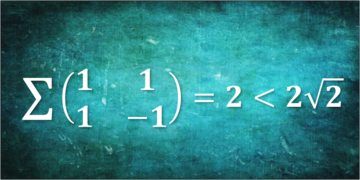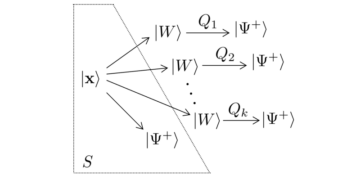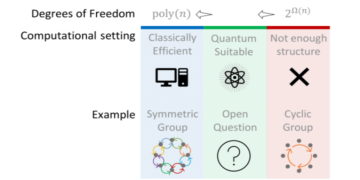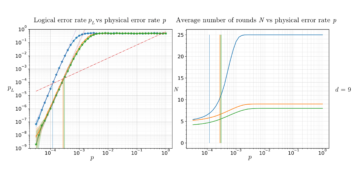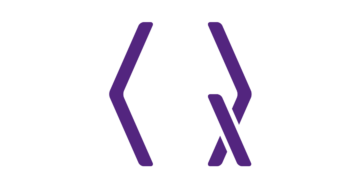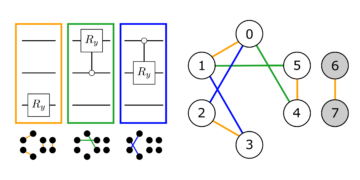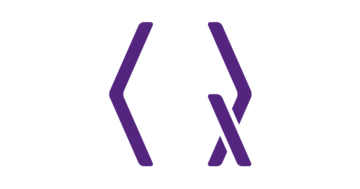1QICI, Department of Computer Science, The University of Hong Kong, Pokfulam Road, Hong Kong, China
2Center on Frontiers of Computing Studies, Peking University, Beijing 100871, China
3Clarendon Laboratory, University of Oxford, Oxford OX1 3PU, UK
4Quantum Advantage Research, Beijing 100080, China
5School of Physics, Peking University, Beijing 100871, China
Find this paper interesting or want to discuss? Scite or leave a comment on SciRate.
Abstract
With the fast development of quantum technology, the sizes of both digital and analog quantum systems increase drastically. In order to have better control and understanding of the quantum hardware, an important task is to characterize the interaction, i.e., to learn the Hamiltonian, which determines both static and dynamic properties of the system. Conventional Hamiltonian learning methods either require costly process tomography or adopt impractical assumptions, such as prior information on the Hamiltonian structure and the ground or thermal states of the system. In this work, we present a robust and efficient Hamiltonian learning method that circumvents these limitations based only on mild assumptions. The proposed method can efficiently learn any Hamiltonian that is sparse on the Pauli basis using only short-time dynamics and local operations without any information on the Hamiltonian or preparing any eigenstates or thermal states. The method has a scalable complexity and a vanishing failure probability regarding the qubit number. Meanwhile, it performs robustly given the presence of state preparation and measurement errors and resiliently against a certain amount of circuit and shot noise. We numerically test the scaling and the estimation accuracy of the method for transverse field Ising Hamiltonian with random interaction strengths and molecular Hamiltonians, both with varying sizes and manually added noise. All these results verify the robustness and efficacy of the method, paving the way for a systematic understanding of the dynamics of large quantum systems.
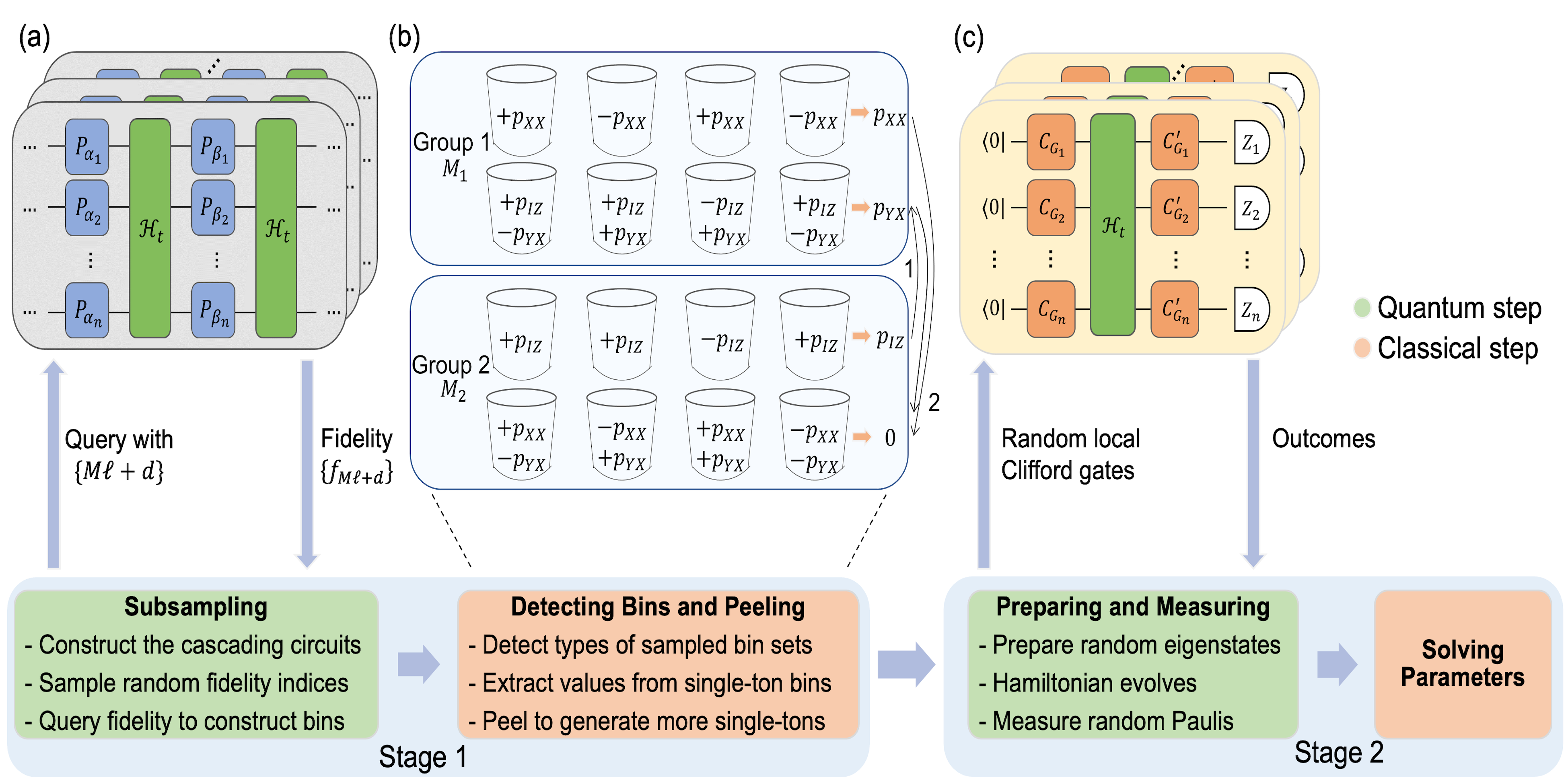
Featured image: This figure represents the whole procedure of the proposed method, which is divided into two steps. In step one, we mainly focus on the Pauli information extraction of the desired Hamiltonian. Circuit (a) serves as a subroutine to estimate the fidelity of the evolution channel. We adopt the structure of randomized benchmarking to make sure robustness against the circuit noise. Plot (b) leverages the fidelity terms to estimate the Pauli error rates, which are equal to the square of the Pauli decompositions of the Hamiltonian. In step two, we complete the learning by estimating the sign information of the Pauli decompositions. We implement circuit (c) with inserted evolution to construct a set of equations in a tomographic manner. As we randomly pick the states and measurements, we can prove the robustness against the SPAM errors.
Popular summary
In this paper, we propose a method to learn the unknown Hamiltonian evolution with efficient running time scaling and robustness against quantum noise and errors. To address the exponential scaling complexity, we assume that the Hamiltonian is sparse over the Pauli basis, making the problem more manageable. Additionally, we incorporate two separate protocols to handle circuit noise and SPAM errors, ensuring the robustness of our approach.
We present numerical results obtained by simulating our method on randomly selected Hydrogen-4 molecular Hamiltonians with over 100 Pauli terms, focusing on systems of up to 8 qubits. Despite the presence of noise, our results exhibit extraordinary accuracy.
Furthermore, we discuss potential improvements for real-world execution in the appendices, such as higher-order fittings and leveraging prior knowledge.
► BibTeX data
► References
[1] Frank Arute, Kunal Arya, Ryan Babbush, Dave Bacon, Joseph C. Bardin, Rami Barends, Rupak Biswas, Sergio Boixo, Fernando G. S. L. Brandao, David A. Buell, Brian Burkett, Yu Chen, Zijun Chen, Ben Chiaro, Roberto Collins, William Courtney, Andrew Dunsworth, Edward Farhi, Brooks Foxen, Austin Fowler, Craig Gidney, Marissa Giustina, Rob Graff, Keith Guerin, Steve Habegger, Matthew P. Harrigan, Michael J. Hartmann, Alan Ho, Markus Hoffmann, Trent Huang, Travis S. Humble, Sergei V. Isakov, Evan Jeffrey, Zhang Jiang, Dvir Kafri, Kostyantyn Kechedzhi, Julian Kelly, Paul V. Klimov, Sergey Knysh, Alexander Korotkov, Fedor Kostritsa, David Landhuis, Mike Lindmark, Erik Lucero, Dmitry Lyakh, Salvatore Mandrà, Jarrod R. McClean, Matthew McEwen, Anthony Megrant, Xiao Mi, Kristel Michielsen, Masoud Mohseni, Josh Mutus, Ofer Naaman, Matthew Neeley, Charles Neill, Murphy Yuezhen Niu, Eric Ostby, Andre Petukhov, John C. Platt, Chris Quintana, Eleanor G. Rieffel, Pedram Roushan, Nicholas C. Rubin, Daniel Sank, Kevin J. Satzinger, Vadim Smelyanskiy, Kevin J. Sung, Matthew D. Trevithick, Amit Vainsencher, Benjamin Villalonga, Theodore White, Z. Jamie Yao, Ping Yeh, Adam Zalcman, Hartmut Neven, and John M. Martinis. Quantum supremacy using a programmable superconducting processor. Nature, 574 (7779): 505–510, October 2019. 10.1038/s41586-019-1666-5.
https://doi.org/10.1038/s41586-019-1666-5
[2] C Neill, T McCourt, X Mi, Z Jiang, MY Niu, W Mruczkiewicz, I Aleiner, F Arute, K Arya, J Atalaya, et al. Accurately computing the electronic properties of a quantum ring. Nature, 594 (7864): 508–512, 2021. 10.1038/s41586-021-03576-2.
https://doi.org/10.1038/s41586-021-03576-2
[3] Sepehr Ebadi, Tout T Wang, Harry Levine, Alexander Keesling, Giulia Semeghini, Ahmed Omran, Dolev Bluvstein, Rhine Samajdar, Hannes Pichler, Wen Wei Ho, et al. Quantum phases of matter on a 256-atom programmable quantum simulator. Nature, 595 (7866): 227–232, 2021. 10.1038/s41586-021-03582-4.
https://doi.org/10.1038/s41586-021-03582-4
[4] Yulin Wu, Wan-Su Bao, Sirui Cao, Fusheng Chen, Ming-Cheng Chen, Xiawei Chen, Tung-Hsun Chung, Hui Deng, Yajie Du, Daojin Fan, et al. Strong quantum computational advantage using a superconducting quantum processor. Physical review letters, 127 (18): 180501, 2021. 10.1103/PhysRevLett.127.180501.
https://doi.org/10.1103/PhysRevLett.127.180501
[5] Ming Gong, Shiyu Wang, Chen Zha, Ming-Cheng Chen, He-Liang Huang, Yulin Wu, Qingling Zhu, Youwei Zhao, Shaowei Li, Shaojun Guo, et al. Quantum walks on a programmable two-dimensional 62-qubit superconducting processor. Science, 372 (6545): 948–952, 2021. 10.1126/science.abg7812.
https://doi.org/10.1126/science.abg7812
[6] Han-Sen Zhong, Hui Wang, Yu-Hao Deng, Ming-Cheng Chen, Li-Chao Peng, Yi-Han Luo, Jian Qin, Dian Wu, Xing Ding, Yi Hu, et al. Quantum computational advantage using photons. Science, 370 (6523): 1460–1463, 2020. 10.1126/science.abe877.
https://doi.org/10.1126/science.abe877
[7] Xiao Mi, Matteo Ippoliti, Chris Quintana, Ami Greene, Zijun Chen, Jonathan Gross, Frank Arute, Kunal Arya, Juan Atalaya, Ryan Babbush, et al. Time-crystalline eigenstate order on a quantum processor. Nature, pages 1–1, 2021. 10.1038/s41586-021-04257-w.
https://doi.org/10.1038/s41586-021-04257-w
[8] Abhinav Kandala, Antonio Mezzacapo, Kristan Temme, Maika Takita, Markus Brink, Jerry M Chow, and Jay M Gambetta. Hardware-efficient variational quantum eigensolver for small molecules and quantum magnets. Nature, 549 (7671): 242–246, 2017. 10.1038/nature23879.
https://doi.org/10.1038/nature23879
[9] Morten Kjaergaard, Mollie E. Schwartz, Jochen Braumüller, Philip Krantz, Joel I.-J. Wang, Simon Gustavsson, and William D. Oliver. Superconducting qubits: Current state of play. Annual Review of Condensed Matter Physics, 11 (1): 369–395, 2020. 10.1146/annurev-conmatphys-031119-050605.
https://doi.org/10.1146/annurev-conmatphys-031119-050605
[10] Jiehang Zhang, Guido Pagano, Paul W Hess, Antonis Kyprianidis, Patrick Becker, Harvey Kaplan, Alexey V Gorshkov, Z-X Gong, and Christopher Monroe. Observation of a many-body dynamical phase transition with a 53-qubit quantum simulator. Nature, 551 (7682): 601, 2017. 10.1038/nature24654.
https://doi.org/10.1038/nature24654
[11] Iulia M Georgescu, Sahel Ashhab, and Franco Nori. Quantum simulation. Reviews of Modern Physics, 86 (1): 153, 2014. 10.1103/RevModPhys.86.153.
https://doi.org/10.1103/RevModPhys.86.153
[12] Ehud Altman, Kenneth R Brown, Giuseppe Carleo, Lincoln D Carr, Eugene Demler, Cheng Chin, Brian DeMarco, Sophia E Economou, Mark A Eriksson, Kai-Mei C Fu, et al. Quantum simulators: Architectures and opportunities. PRX Quantum, 2 (1): 017003, Feb 2021. 10.1103/PRXQuantum.2.017003.
https://doi.org/10.1103/PRXQuantum.2.017003
[13] Philipp Hauke, Fernando M Cucchietti, Luca Tagliacozzo, Ivan Deutsch, and Maciej Lewenstein. Can one trust quantum simulators? Reports on Progress in Physics, 75 (8): 082401, 2012. 10.1088/0034-4885/75/8/082401.
https://doi.org/10.1088/0034-4885/75/8/082401
[14] Christopher E Granade, Christopher Ferrie, Nathan Wiebe, and David G Cory. Robust online hamiltonian learning. New Journal of Physics, 14 (10): 103013, 2012. 10.1088/1367-2630/14/10/103013.
https://doi.org/10.1088/1367-2630/14/10/103013
[15] Nathan Wiebe, Christopher Granade, Christopher Ferrie, and David Cory. Quantum hamiltonian learning using imperfect quantum resources. Physical Review A, 89 (4): 042314, 2014a. 10.1103/PhysRevA.89.042314.
https://doi.org/10.1103/PhysRevA.89.042314
[16] Nathan Wiebe, Christopher Granade, Christopher Ferrie, and David G Cory. Hamiltonian learning and certification using quantum resources. Physical review letters, 112 (19): 190501, 2014b. 10.1103/PhysRevLett.112.190501.
https://doi.org/10.1103/PhysRevLett.112.190501
[17] Stefan Krastanov, Sisi Zhou, Steven T Flammia, and Liang Jiang. Stochastic estimation of dynamical variables. Quantum Science and Technology, 4 (3): 035003, 2019. 10.1088/2058-9565/ab18d5.
https://doi.org/10.1088/2058-9565/ab18d5
[18] Jianwei Wang, Stefano Paesani, Raffaele Santagati, Sebastian Knauer, Antonio A Gentile, Nathan Wiebe, Maurangelo Petruzzella, Jeremy L O’Brien, John G Rarity, Anthony Laing, et al. Experimental quantum hamiltonian learning. Nature Physics, 13 (6): 551–555, 2017. https://doi.org/10.1038/nphys4074.
https://doi.org/10.1038/nphys4074
[19] Thomas E O’Brien, Lev B Ioffe, Yuan Su, David Fushman, Hartmut Neven, Ryan Babbush, and Vadim Smelyanskiy. Quantum computation of molecular structure using data from challenging-to-classically-simulate nuclear magnetic resonance experiments. arXiv preprint arXiv:2109.02163, 2021. 10.48550/arXiv.2109.02163.
https://doi.org/10.48550/arXiv.2109.02163
arXiv:2109.02163
[20] Jeongwan Haah, Robin Kothari, and Ewin Tang. Optimal learning of quantum hamiltonians from high-temperature gibbs states. arXiv preprint arXiv:2108.04842, 2021. 10.48550/arXiv.2108.04842.
https://doi.org/10.48550/arXiv.2108.04842
arXiv:2108.04842
[21] Seth Lloyd. Universal quantum simulators. Science, pages 1073–1078, 1996. 10.1126/science.273.5278.1073.
https://doi.org/10.1126/science.273.5278.1073
[22] Arnab Das and Bikas K Chakrabarti. Colloquium: Quantum annealing and analog quantum computation. Reviews of Modern Physics, 80 (3): 1061, 2008. 10.1103/RevModPhys.80.1061.
https://doi.org/10.1103/RevModPhys.80.1061
[23] Axel Friedenauer, Hector Schmitz, Jan Tibor Glueckert, Diego Porras, and Tobias Schätz. Simulating a quantum magnet with trapped ions. Nature Physics, 4 (10): 757–761, 2008. https://doi.org/10.1038/nphys1032.
https://doi.org/10.1038/nphys1032
[24] Alán Aspuru-Guzik and Philip Walther. Photonic quantum simulators. Nature physics, 8 (4): 285–291, 2012. 10.1038/nphys2253.
https://doi.org/10.1038/nphys2253
[25] Ethan Bernstein and Umesh Vazirani. Quantum complexity theory. SIAM Journal on computing, 26 (5): 1411–1473, 1997. 10.1137/S0097539796300921.
https://doi.org/10.1137/S0097539796300921
[26] Peter W. Shor. Scheme for reducing decoherence in quantum computer memory. Phys. Rev. A, 52 (4): R2493–R2496, Oct 1995. 10.1103/PhysRevA.52.R2493.
https://doi.org/10.1103/PhysRevA.52.R2493
[27] Lov K Grover. A fast quantum mechanical algorithm for database search. In Proceedings of the twenty-eighth annual ACM symposium on Theory of computing, pages 212–219, 1996. 10.1145/237814.237866.
https://doi.org/10.1145/237814.237866
[28] Aram W Harrow, Avinatan Hassidim, and Seth Lloyd. Quantum algorithm for linear systems of equations. Physical review letters, 103 (15): 150502, 2009. 10.1103/PhysRevLett.103.150502.
https://doi.org/10.1103/PhysRevLett.103.150502
[29] Philip Krantz, Morten Kjaergaard, Fei Yan, Terry P Orlando, Simon Gustavsson, and William D Oliver. A quantum engineer’s guide to superconducting qubits. Applied Physics Reviews, 6 (2): 021318, 2019. 10.1063/1.5089550.
https://doi.org/10.1063/1.5089550
[30] Andreas Trabesinger. Quantum simulation. Nature Physics, 8 (4): 263–263, 2012. https://doi.org/10.1038/nphys2258.
https://doi.org/10.1038/nphys2258
[31] Stefano Pirandola, B Roy Bardhan, Tobias Gehring, Christian Weedbrook, and Seth Lloyd. Advances in photonic quantum sensing. Nature Photonics, 12 (12): 724–733, 2018. 10.1038/s41566-018-0301-6.
https://doi.org/10.1038/s41566-018-0301-6
[32] Christian L Degen, F Reinhard, and Paola Cappellaro. Quantum sensing. Reviews of modern physics, 89 (3): 035002, 2017. 10.1103/RevModPhys.89.035002.
https://doi.org/10.1103/RevModPhys.89.035002
[33] Jens M Boss, KS Cujia, Jonathan Zopes, and Christian L Degen. Quantum sensing with arbitrary frequency resolution. Science, 356 (6340): 837–840, 2017. 10.1126/science.aam7009.
https://doi.org/10.1126/science.aam7009
[34] Isaac L. Chuang and M. A. Nielsen. Prescription for experimental determination of the dynamics of a quantum black box. J. Mod. Opt., 44 (11-12): 2455–2467, 1997. 10.1080/09500349708231894.
https://doi.org/10.1080/09500349708231894
[35] J. B. Altepeter, D. Branning, E. Jeffrey, T. C. Wei, P. G. Kwiat, R. T. Thew, J. L. O’Brien, M. A. Nielsen, and A. G. White. Ancilla-assisted quantum process tomography. Phys. Rev. Lett., 90: 193601, May 2003. 10.1103/PhysRevLett.90.193601.
https://doi.org/10.1103/PhysRevLett.90.193601
[36] Debbie W Leung. Choi’s proof as a recipe for quantum process tomography. Journal of Mathematical Physics, 44 (2): 528–533, 2003. 10.1063/1.1518554.
https://doi.org/10.1063/1.1518554
[37] Seth T. Merkel, Jay M. Gambetta, John A. Smolin, S. Poletto, A. D. Córcoles, B. R. Johnson, Colm A. Ryan, and M. Steffen. Self-consistent quantum process tomography. Phys. Rev. A, 87: 062119, 2013. 10.1103/PhysRevA.87.062119.
https://doi.org/10.1103/PhysRevA.87.062119
[38] Saleh Rahimi-Keshari, Artur Scherer, Ady Mann, Ali T Rezakhani, AI Lvovsky, and Barry C Sanders. Quantum process tomography with coherent states. New Journal of Physics, 13 (1): 013006, 2011. 10.1088/1367-2630/13/1/013006.
https://doi.org/10.1088/1367-2630/13/1/013006
[39] Masoud Mohseni, Ali T Rezakhani, and Daniel A Lidar. Quantum-process tomography: Resource analysis of different strategies. Physical Review A, 77 (3): 032322, 2008a. 10.1103/PhysRevA.77.032322.
https://doi.org/10.1103/PhysRevA.77.032322
[40] Charles H Baldwin, Amir Kalev, and Ivan H Deutsch. Quantum process tomography of unitary and near-unitary maps. Physical Review A, 90 (1): 012110, 2014. 10.1103/PhysRevA.90.012110.
https://doi.org/10.1103/PhysRevA.90.012110
[41] John Preskill. Quantum Computing in the NISQ era and beyond. Quantum, 2: 79, August 2018. ISSN 2521-327X. 10.22331/q-2018-08-06-79. URL https://doi.org/10.22331/q-2018-08-06-79.
https://doi.org/10.22331/q-2018-08-06-79
[42] Eyal Bairey, Itai Arad, and Netanel H. Lindner. Learning a local hamiltonian from local measurements. Phys. Rev. Lett., 122 (2): 020504, Jan 2019. ISSN 1079-7114. 10.1103/physrevlett.122.020504. URL http://dx.doi.org/10.1103/PhysRevLett.122.020504.
https://doi.org/10.1103/physrevlett.122.020504
[43] Tim J Evans, Robin Harper, and Steven T Flammia. Scalable bayesian hamiltonian learning. arXiv preprint arXiv:1912.07636, 2019. 10.48550/arXiv.1912.07636.
https://doi.org/10.48550/arXiv.1912.07636
arXiv:1912.07636
[44] Anurag Anshu, Srinivasan Arunachalam, Tomotaka Kuwahara, and Mehdi Soleimanifar. Sample-efficient learning of interacting quantum systems. Nature Physics, 17 (8): 931–935, 2021. 10.1038/s41567-021-01232-0.
https://doi.org/10.1038/s41567-021-01232-0
[45] Xiao-Liang Qi and Daniel Ranard. Determining a local hamiltonian from a single eigenstate. Quantum, 3: 159, 2019. 10.22331/q-2019-07-08-159.
https://doi.org/10.22331/q-2019-07-08-159
[46] Zhi Li, Liujun Zou, and Timothy H. Hsieh. Hamiltonian tomography via quantum quench. Phys. Rev. Lett., 124: 160502, Apr 2020. 10.1103/PhysRevLett.124.160502. URL https://doi.org/10.1103/PhysRevLett.124.160502.
https://doi.org/10.1103/PhysRevLett.124.160502
[47] Assaf Zubida, Elad Yitzhaki, Netanel H Lindner, and Eyal Bairey. Optimal short-time measurements for hamiltonian learning. arXiv preprint arXiv:2108.08824, 2021. https://doi.org/10.48550/arXiv.2108.08824.
https://doi.org/10.48550/arXiv.2108.08824
arXiv:2108.08824
[48] Dominik Hangleiter, Ingo Roth, Jens Eisert, and Pedram Roushan. Precise hamiltonian identification of a superconducting quantum processor. arXiv preprint arXiv:2108.08319, 2021. 10.48550/arXiv.2108.08319.
https://doi.org/10.48550/arXiv.2108.08319
arXiv:2108.08319
[49] Steven T. Flammia and Joel J. Wallman. Efficient estimation of pauli channels. ACM Transactions on Quantum Computing, 1 (1), dec 2020. ISSN 2643-6809. 10.1145/3408039. URL https://doi.org/10.1145/3408039.
https://doi.org/10.1145/3408039
[50] Antonio Mezzacapo, U Las Heras, JS Pedernales, L DiCarlo, E Solano, and L Lamata. Digital quantum rabi and dicke models in superconducting circuits. Scientific reports, 4 (1): 1–4, 2014. 10.1038/srep07482.
https://doi.org/10.1038/srep07482
[51] L García-Álvarez, J Casanova, A Mezzacapo, IL Egusquiza, L Lamata, G Romero, and E Solano. Fermion-fermion scattering in quantum field theory with superconducting circuits. Physical review letters, 114 (7): 070502, 2015. 10.1103/PhysRevLett.114.070502.
https://doi.org/10.1103/PhysRevLett.114.070502
[52] Serwan Asaad, Christian Dickel, Nathan K Langford, Stefano Poletto, Alessandro Bruno, Michiel Adriaan Rol, Duije Deurloo, and Leonardo DiCarlo. Independent, extensible control of same-frequency superconducting qubits by selective broadcasting. npj Quantum Information, 2 (1): 1–7, 2016. 10.1038/npjqi.2016.29.
https://doi.org/10.1038/npjqi.2016.29
[53] Steven J Weber, Gabriel O Samach, David Hover, Simon Gustavsson, David K Kim, Alexander Melville, Danna Rosenberg, Adam P Sears, Fei Yan, Jonilyn L Yoder, et al. Coherent coupled qubits for quantum annealing. Physical Review Applied, 8 (1): 014004, 2017. 10.1103/PhysRevApplied.8.014004.
https://doi.org/10.1103/PhysRevApplied.8.014004
[54] Hartmut Häffner, Wolfgang Hänsel, CF Roos, Jan Benhelm, Michael Chwalla, Timo Körber, UD Rapol, Mark Riebe, PO Schmidt, Christoph Becher, et al. Scalable multiparticle entanglement of trapped ions. Nature, 438 (7068): 643–646, 2005. 10.1038/nature04279.
https://doi.org/10.1038/nature04279
[55] Rainer Blatt and Christian F Roos. Quantum simulations with trapped ions. Nature Physics, 8 (4): 277, 2012. 10.1038/nphys2252.
https://doi.org/10.1038/nphys2252
[56] Mark Saffman. Quantum computing with atomic qubits and rydberg interactions: progress and challenges. Journal of Physics B: Atomic, Molecular and Optical Physics, 49 (20): 202001, 2016. 10.1088/0953-4075/49/20/202001.
https://doi.org/10.1088/0953-4075/49/20/202001
[57] David G Cory, Mark D Price, and Timothy F Havel. Nuclear magnetic resonance spectroscopy: An experimentally accessible paradigm for quantum computing. Physica D: Nonlinear Phenomena, 120 (1-2): 82–101, 1998. 10.1016/S0167-2789(98)00046-3.
https://doi.org/10.1016/S0167-2789(98)00046-3
[58] Daniel Stilck Franca, Liubov A Markovich, VV Dobrovitski, Albert H Werner, and Johannes Borregaard. Efficient and robust estimation of many-qubit hamiltonians. arXiv preprint arXiv:2205.09567, 2022. https://doi.org/10.48550/arXiv.2205.09567.
https://doi.org/10.48550/arXiv.2205.09567
arXiv:2205.09567
[59] Andi Gu, Lukasz Cincio, and Patrick J Coles. Practical black box hamiltonian learning. arXiv preprint arXiv:2206.15464, 2022. https://doi.org/10.48550/arXiv.2206.15464.
https://doi.org/10.48550/arXiv.2206.15464
arXiv:2206.15464
[60] Frederik Wilde, Augustine Kshetrimayum, Ingo Roth, Dominik Hangleiter, Ryan Sweke, and Jens Eisert. Scalably learning quantum many-body hamiltonians from dynamical data. arXiv preprint arXiv:2209.14328, 2022. https://doi.org/10.48550/arXiv.2209.14328.
https://doi.org/10.48550/arXiv.2209.14328
arXiv:2209.14328
[61] Hsin-Yuan Huang, Yu Tong, Di Fang, and Yuan Su. Learning many-body hamiltonians with heisenberg-limited scaling. Phys. Rev. Lett., 130: 200403, May 2023. 10.1103/PhysRevLett.130.200403. URL https://doi.org/10.1103/PhysRevLett.130.200403.
https://doi.org/10.1103/PhysRevLett.130.200403
[62] Robin Harper, Wenjun Yu, and Steven T. Flammia. Fast estimation of sparse quantum noise. PRX Quantum, 2: 010322, Feb 2021. 10.1103/PRXQuantum.2.010322. URL https://doi.org/10.1103/PRXQuantum.2.010322.
https://doi.org/10.1103/PRXQuantum.2.010322
[63] A. Shabani, R. L. Kosut, M. Mohseni, H. Rabitz, M. A. Broome, M. P. Almeida, A. Fedrizzi, and A. G. White. Efficient measurement of quantum dynamics via compressive sensing. Phys. Rev. Lett., 106 (10): 100401, Mar 2011. 10.1103/PhysRevLett.106.100401.
https://doi.org/10.1103/PhysRevLett.106.100401
[64] Shi-Yao Hou, Ningping Cao, Sirui Lu, Yi Shen, Yiu-Tung Poon, and Bei Zeng. Determining system hamiltonian from eigenstate measurements without correlation functions. New Journal of Physics, 22 (8): 083088, 2020. 10.1088/1367-2630/abaacf.
https://doi.org/10.1088/1367-2630/abaacf
[65] James R. Garrison and Tarun Grover. Does a single eigenstate encode the full hamiltonian? Phys. Rev. X, 8: 021026, Apr 2018. 10.1103/PhysRevX.8.021026. URL https://doi.org/10.1103/PhysRevX.8.021026.
https://doi.org/10.1103/PhysRevX.8.021026
[66] Maika Takita, Andrew W Cross, AD Córcoles, Jerry M Chow, and Jay M Gambetta. Experimental demonstration of fault-tolerant state preparation with superconducting qubits. Physical review letters, 119 (18): 180501, 2017. 10.1103/PhysRevLett.119.180501.
https://doi.org/10.1103/PhysRevLett.119.180501
[67] Abhinav Kandala, Kristan Temme, Antonio D Córcoles, Antonio Mezzacapo, Jerry M Chow, and Jay M Gambetta. Error mitigation extends the computational reach of a noisy quantum processor. Nature, 567 (7749): 491, 2019. 10.1038/s41586-019-1040-7.
https://doi.org/10.1038/s41586-019-1040-7
[68] Jinzhao Sun, Xiao Yuan, Takahiro Tsunoda, Vlatko Vedral, Simon C. Benjamin, and Suguru Endo. Mitigating realistic noise in practical noisy intermediate-scale quantum devices. Phys. Rev. Applied, 15: 034026, Mar 2021a. 10.1103/PhysRevApplied.15.034026. URL https://doi.org/10.1103/PhysRevApplied.15.034026.
https://doi.org/10.1103/PhysRevApplied.15.034026
[69] Julia Kempe, Alexei Kitaev, and Oded Regev. The complexity of the local hamiltonian problem. Siam journal on computing, 35 (5): 1070–1097, 2006. 10.1007/978-3-540-30538-5_31.
https://doi.org/10.1007/978-3-540-30538-5_31
[70] Andrew M Childs, Dmitri Maslov, Yunseong Nam, Neil J Ross, and Yuan Su. Toward the first quantum simulation with quantum speedup. Proceedings of the National Academy of Sciences, 115 (38): 9456–9461, 2018. 10.1073/pnas.1801723115.
https://doi.org/10.1073/pnas.1801723115
[71] Guang Hao Low and Isaac L Chuang. Hamiltonian simulation by qubitization. Quantum, 3: 163, 2019. 10.22331/q-2019-07-12-163.
https://doi.org/10.22331/q-2019-07-12-163
[72] Jinzhao Sun, Suguru Endo, Huiping Lin, Patrick Hayden, Vlatko Vedral, and Xiao Yuan. Perturbative quantum simulation. arXiv preprint arXiv:2106.05938, 2021b. 10.48550/arXiv.2106.05938.
https://doi.org/10.48550/arXiv.2106.05938
arXiv:2106.05938
[73] J. Helsen, I. Roth, E. Onorati, A.H. Werner, and J. Eisert. General framework for randomized benchmarking. PRX Quantum, 3: 020357, Jun 2022. 10.1103/PRXQuantum.3.020357.
https://doi.org/10.1103/PRXQuantum.3.020357
[74] Jonas Helsen, Joel J Wallman, Steven T Flammia, and Stephanie Wehner. Multiqubit randomized benchmarking using few samples. Physical Review A, 100 (3): 032304, 2019a. 10.1103/PhysRevA.100.032304.
https://doi.org/10.1103/PhysRevA.100.032304
[75] Joel Wallman. Randomized benchmarking with gate-dependent noise. Quantum, 2: 47, 2018. 10.22331/q-2018-01-29-47.
https://doi.org/10.22331/q-2018-01-29-47
[76] Robin Harper, Steven T Flammia, and Joel J Wallman. Efficient learning of quantum noise. Nature Physics, 16 (12): 1184–1188, 2020. https://doi.org/10.1038/s41567-020-0992-8.
https://doi.org/10.1038/s41567-020-0992-8
[77] R. Barends, J. Kelly, A. Megrant, A. Veitia, D. Sank, E. Jeffrey, T. C. White, J. Mutus, A. G. Fowler, B. Campbell, Y. Chen, Z. Chen, B. Chiaro, A. Dunsworth, C. Neill, P. O’Malley, P. Roushan, A. Vainsencher, J. Wenner, A. N. Korotkov, A. N. Cleland, and John M. Martinis. Superconducting quantum circuits at the surface code threshold for fault tolerance. Nature, 508 (7497): 500–503, apr 2014. 10.1038/nature13171.
https://doi.org/10.1038/nature13171
[78] Aaron Somoroff, Quentin Ficheux, Raymond A Mencia, Haonan Xiong, Roman V Kuzmin, and Vladimir E Manucharyan. Millisecond coherence in a superconducting qubit. arXiv preprint arXiv:2103.08578, 2021. 10.48550/arXiv.2103.08578.
https://doi.org/10.48550/arXiv.2103.08578
arXiv:2103.08578
[79] Easwar Magesan. Characterizing Noise in Quantum Systems. PhD thesis, University of Waterloo, Waterloo, Ontario, Canada, 2012. URL https://uwspace.uwaterloo.ca/bitstream/handle/10012/6832/Magesan_Easwar.pdf.
https://uwspace.uwaterloo.ca/bitstream/handle/10012/6832/Magesan_Easwar.pdf
[80] Christoph Dankert, Richard Cleve, Joseph Emerson, and Etera Livine. Exact and approximate unitary 2-designs and their application to fidelity estimation. Phys. Rev. A, 80: 012304, Jul 2009. 10.1103/PhysRevA.80.012304.
https://doi.org/10.1103/PhysRevA.80.012304
[81] Alexander Erhard, Joel J. Wallman, Lukas Postler, Michael Meth, Roman Stricker, Esteban A. Martinez, Philipp Schindler, Thomas Monz, Joseph Emerson, and Rainer Blatt. Characterizing large-scale quantum computers via cycle benchmarking. Nat. Commun., 10 (1): 5347, November 2019. 10.1038/s41467-019-13068-7. URL https://doi.org/10.1038/s41467-019-13068-7.
https://doi.org/10.1038/s41467-019-13068-7
[82] Jonas Helsen, Xiao Xue, Lieven MK Vandersypen, and Stephanie Wehner. A new class of efficient randomized benchmarking protocols. npj Quantum Inf., 5: 71, 2019b. 10.1038/s41534-019-0182-7.
https://doi.org/10.1038/s41534-019-0182-7
[83] M. Mohseni, A. T. Rezakhani, and D. A. Lidar. Quantum-process tomography: Resource analysis of different strategies. Phys. Rev. A, 77: 032322, Mar 2008b. 10.1103/PhysRevA.77.032322. URL https://doi.org/10.1103/PhysRevA.77.032322.
https://doi.org/10.1103/PhysRevA.77.032322
[84] J. F. Poyatos, J. I. Cirac, and P. Zoller. Complete characterization of a quantum process: The two-bit quantum gate. Phys. Rev. Lett., 78: 390–393, Jan 1997. 10.1103/PhysRevLett.78.390. URL https://doi.org/10.1103/PhysRevLett.78.390.
https://doi.org/10.1103/PhysRevLett.78.390
[85] Xiao Yuan, Zhen Zhang, Norbert Lütkenhaus, and Xiongfeng Ma. Simulating single photons with realistic photon sources. Physical Review A, 94 (6): 062305, 2016. 10.1103/PhysRevA.94.062305.
https://doi.org/10.1103/PhysRevA.94.062305
[86] Filippo Troiani, Alberto Ghirri, Marco Affronte, S Carretta, P Santini, G Amoretti, S Piligkos, G Timco, and REP Winpenny. Molecular engineering of antiferromagnetic rings for quantum computation. Physical review letters, 94 (20): 207208, 2005. 10.1103/PhysRevLett.94.207208.
https://doi.org/10.1103/PhysRevLett.94.207208
[87] P Santini, S Carretta, F Troiani, and G Amoretti. Molecular nanomagnets as quantum simulators. Physical review letters, 107 (23): 230502, 2011. 10.1103/PhysRevLett.107.230502.
https://doi.org/10.1103/PhysRevLett.107.230502
[88] Zeyao Han and Wenjun Yu. Github: HamiltonianLearning. https://github.com/zyHan2077/HamiltonianLearning, December 2021.
https://github.com/zyHan2077/HamiltonianLearning
[89] Senrui Chen, Sisi Zhou, Alireza Seif, and Liang Jiang. Quantum advantages for pauli channel estimation. Phys. Rev. A, 105: 032435, Mar 2022. 10.1103/PhysRevA.105.032435. URL https://doi.org/10.1103/PhysRevA.105.032435.
https://doi.org/10.1103/PhysRevA.105.032435
[90] Xiao Li, Joseph Kurata Bradley, Sameer Pawar, and Kannan Ramchandran. The SPRIGHT algorithm for robust sparse Hadamard transforms. In 2014 IEEE International Symposium on Information Theory, Honolulu, Hawaii, USA, June 2014. IEEE. 10.1109/isit.2014.6875155.
https://doi.org/10.1109/isit.2014.6875155
[91] E. J. Candes and T. Tao. Decoding by linear programming. IEEE Transactions on Information Theory, 51 (12): 4203–4215, 2005. 10.1109/TIT.2005.858979.
https://doi.org/10.1109/TIT.2005.858979
[92] Emmanuel J Candes, Justin K Romberg, and Terence Tao. Stable signal recovery from incomplete and inaccurate measurements. Communications on Pure and Applied Mathematics: A Journal Issued by the Courant Institute of Mathematical Sciences, 59 (8): 1207–1223, 2006. 10.1002/cpa.20124.
https://doi.org/10.1002/cpa.20124
[93] Richard Baraniuk, Mark Davenport, Ronald DeVore, and Michael Wakin. A simple proof of the restricted isometry property for random matrices. Constructive Approximation, 28 (3): 253–263, 2008. 10.1007/s00365-007-9003-x.
https://doi.org/10.1007/s00365-007-9003-x
[94] Emmanuel J. Candès. The restricted isometry property and its implications for compressed sensing. Comptes Rendus Mathematique, 346 (9): 589–592, 2008. ISSN 1631-073X. https://doi.org/10.1016/j.crma.2008.03.014. URL https://www.sciencedirect.com/science/article/pii/S1631073X08000964.
https://doi.org/10.1016/j.crma.2008.03.014
https://www.sciencedirect.com/science/article/pii/S1631073X08000964
Cited by
[1] Frederik Wilde, Augustine Kshetrimayum, Ingo Roth, Dominik Hangleiter, Ryan Sweke, and Jens Eisert, “Scalably learning quantum many-body Hamiltonians from dynamical data”, arXiv:2209.14328, (2022).
[2] Andreas Elben, Steven T. Flammia, Hsin-Yuan Huang, Richard Kueng, John Preskill, Benoît Vermersch, and Peter Zoller, “The randomized measurement toolbox”, Nature Reviews Physics 5 1, 9 (2023).
[3] Hsin-Yuan Huang, Yu Tong, Di Fang, and Yuan Su, “Learning Many-Body Hamiltonians with Heisenberg-Limited Scaling”, Physical Review Letters 130 20, 200403 (2023).
[4] Lorenzo Pastori, Tobias Olsacher, Christian Kokail, and Peter Zoller, “Characterization and Verification of Trotterized Digital Quantum Simulation Via Hamiltonian and Liouvillian Learning”, PRX Quantum 3 3, 030324 (2022).
[5] Bruno Murta and J. Fernández-Rossier, “One-to-one correspondence between thermal structure factors and coupling constants of general bilinear Hamiltonians”, Physical Review E 105 6, L062101 (2022).
[6] João Augusto Sobral, Stefan Obernauer, Simon Turkel, Abhay N. Pasupathy, and Mathias S. Scheurer, “Machine Learning Microscopic Form of Nematic Order in twisted double-bilayer graphene”, arXiv:2302.12274, (2023).
[7] Yigal Ilin and Itai Arad, “Benchmarking a quantum computer using an engineered dissipative steady-state”, arXiv:2302.06517, (2023).
[8] Alicja Dutkiewicz, Thomas E. O’Brien, and Thomas Schuster, “The advantage of quantum control in many-body Hamiltonian learning”, arXiv:2304.07172, (2023).
[9] Matthias C. Caro, “Learning Quantum Processes and Hamiltonians via the Pauli Transfer Matrix”, arXiv:2212.04471, (2022).
[10] Tian-Lun Zhao, Shi-Xin Hu, and Yi Zhang, “Maximum-likelihood-estimate Hamiltonian learning via efficient and robust quantum likelihood gradient”, Physical Review Research 5 2, 023136 (2023).
[11] Ammar Daskin, Rishabh Gupta, and Sabre Kais, “Dimension reduction and redundancy removal through successive Schmidt decompositions”, arXiv:2302.04801, (2023).
[12] Rishabh Gupta, Raja Selvarajan, Manas Sajjan, Raphael D. Levine, and Sabre Kais, “Hamiltonian Learning from Time Dynamics Using Variational Algorithms”, Journal of Physical Chemistry A 127 14, 3246 (2023).
The above citations are from SAO/NASA ADS (last updated successfully 2023-06-29 14:51:01). The list may be incomplete as not all publishers provide suitable and complete citation data.
Could not fetch Crossref cited-by data during last attempt 2023-06-29 14:51:00: Could not fetch cited-by data for 10.22331/q-2023-06-29-1045 from Crossref. This is normal if the DOI was registered recently.
This Paper is published in Quantum under the Creative Commons Attribution 4.0 International (CC BY 4.0) license. Copyright remains with the original copyright holders such as the authors or their institutions.
- SEO Powered Content & PR Distribution. Get Amplified Today.
- PlatoData.Network Vertical Generative Ai. Empower Yourself. Access Here.
- PlatoAiStream. Web3 Intelligence. Knowledge Amplified. Access Here.
- PlatoESG. Automotive / EVs, Carbon, CleanTech, Energy, Environment, Solar, Waste Management. Access Here.
- BlockOffsets. Modernizing Environmental Offset Ownership. Access Here.
- Source: https://quantum-journal.org/papers/q-2023-06-29-1045/
- :has
- :is
- :not
- ][p
- $UP
- 1
- 10
- 100
- 107
- 11
- 12
- 13
- 14
- 15%
- 16
- 17
- 19
- 1949
- 1996
- 1998
- 20
- 2005
- 2006
- 2008
- 2009
- 2011
- 2012
- 2013
- 2014
- 2015
- 2016
- 2017
- 2018
- 2019
- 2020
- 2021
- 2022
- 2023
- 22
- 23
- 24
- 25
- 26
- 27
- 28
- 30
- 31
- 32
- 33
- 39
- 40
- 46
- 49
- 50
- 51
- 60
- 65
- 66
- 67
- 7
- 70
- 72
- 75
- 77
- 8
- 80
- 84
- 87
- 9
- 90
- 91
- 98
- a
- Aaron
- above
- ABSTRACT
- Academy
- access
- accessible
- accuracy
- accurately
- ACM
- Ad
- Adam
- added
- Additionally
- address
- adopt
- advances
- ADvantage
- advantages
- affect
- affiliations
- against
- AI
- AL
- Alan
- Alexander
- algorithm
- algorithms
- alireza
- All
- amount
- an
- analysis
- and
- Andrew
- annual
- Anthony
- any
- Application
- applied
- approach
- approximate
- apr
- ARE
- AS
- assumptions
- At
- AUGUST
- austin
- author
- authors
- based
- basis
- Bayesian
- BE
- become
- Beijing
- ben
- benchmarking
- Benjamin
- Better
- between
- Beyond
- Black
- BOSS
- both
- Box
- Break
- Brian
- bring
- brink
- Broadcasting
- Bruno
- by
- CAN
- Canada
- certain
- Certification
- challenges
- Channel
- channels
- characterize
- Charles
- chemistry
- chen
- Cheng
- chin
- chow
- Chris
- Christopher
- class
- code
- COHERENT
- Collins
- comment
- Commons
- Communications
- complete
- complexity
- computation
- computer
- computer science
- computers
- computing
- Condensed matter
- construct
- constructive
- control
- conventional
- copyright
- Correlation
- costly
- could
- coupled
- Craig
- Cross
- Current
- Current state
- cycle
- Daniel
- data
- Database
- Dave
- David
- Debbie
- December
- december 2021
- Decoding
- degen
- Den
- Department
- desired
- Despite
- determination
- determines
- determining
- Development
- Devices
- Diego
- different
- digital
- Dimension
- discuss
- divided
- does
- drastically
- during
- dynamic
- dynamics
- e
- E&T
- Edward
- efficacy
- efficient
- efficiently
- either
- Electronic
- engineer
- Engineering
- ensuring
- Enter
- equal
- equations
- Era
- erik
- error
- Errors
- estimate
- Ether (ETH)
- eugene
- eventually
- evolution
- execution
- exhibit
- experiments
- exponential
- exponentially
- extends
- extraction
- extraordinary
- factors
- Failure
- fan
- FAST
- Feb
- fei
- few
- fidelity
- field
- Figure
- First
- Focus
- focusing
- For
- form
- Framework
- Frequency
- from
- Frontiers
- fu
- full
- functions
- General
- GitHub
- giuseppe
- given
- Graphene
- gross
- Ground
- guide
- handle
- Hardware
- harvard
- Have
- hawaii
- holders
- Hong
- Hong Kong
- hover
- However
- http
- HTTPS
- huang
- i
- Identification
- IEEE
- if
- image
- implement
- implications
- important
- improvements
- in
- inaccurate
- incorporate
- Increase
- independent
- information
- information extraction
- Institute
- institutions
- interacting
- interaction
- interactions
- interesting
- International
- into
- intriguing
- Issued
- IT
- ITS
- james
- Jamie
- Jan
- JavaScript
- jeffrey
- John
- Johnson
- journal
- juan
- june
- Justin
- keith
- kenneth
- Kim
- knowledge
- Kong
- laboratory
- large
- large-scale
- LAS
- Last
- LEARN
- learning
- Leave
- leverages
- leveraging
- li
- License
- lidar
- limitations
- lin
- Lincoln
- List
- local
- Low
- machine
- machine learning
- Machines
- Magnets
- mainly
- make
- Making
- manner
- manually
- Maps
- Marco
- mark
- mathematical
- mathematics
- Matrix
- Matter
- matthew
- max-width
- May..
- mcclean
- Meanwhile
- measurement
- measurements
- mechanical
- Memory
- method
- methods
- Michael
- mike
- mild
- millisecond
- mitigating
- mitigation
- models
- Modern
- molecular
- Month
- more
- Moreover
- much
- murphy
- my
- Nam
- National
- Nature
- New
- Noise
- normal
- November
- nuclear
- number
- obstacles
- obtained
- Oct
- october
- of
- on
- ONE
- online
- only
- Ontario
- open
- Operations
- opportunities
- optical
- Optical physics
- optimal
- or
- order
- original
- Orlando
- our
- out
- outcomes
- over
- Oxford
- Paper
- paradigm
- patrick
- Paul
- Paving
- Peking
- performs
- Peter
- phase
- Phases of Matter
- Photons
- physical
- Physics
- pick
- ping
- plato
- Plato Data Intelligence
- PlatoData
- Play
- PO
- potential
- Practical
- precise
- preparation
- preparing
- prescription
- presence
- present
- price
- Prior
- probability
- Problem
- procedure
- Proceedings
- process
- processes
- Processor
- Programming
- Progress
- proof
- properties
- property
- propose
- proposed
- protocols
- Prove
- provide
- published
- publisher
- publishers
- Qi
- Quantum
- Quantum Annealing
- quantum computational advantage
- Quantum computational advantage using photons
- Quantum Computer
- quantum computers
- quantum computing
- quantum gate
- quantum information
- Quantum Supremacy
- quantum systems
- quantum technology
- Qubit
- qubits
- RAMI
- random
- Randomized
- rarity
- Rates
- reach
- real world
- realistic
- recently
- recipe
- recovery
- reducing
- reduction
- references
- regarding
- registered
- remains
- removal
- Reports
- represents
- require
- research
- Resolution
- resonance
- resource
- Resources
- restricted
- Results
- review
- Reviews
- Richard
- Ring
- road
- rob
- roberto
- Robin
- robust
- robustness
- roy
- running
- Ryan
- s
- sanders
- scalable
- scaling
- scheme
- Science
- Science and Technology
- SCIENCES
- scientific
- Search
- selected
- selective
- separate
- serves
- set
- shot
- siam
- sign
- Signal
- significantly
- Simon
- Simple
- simulation
- simulator
- single
- sizes
- small
- some
- Sources
- spam
- specifically
- Spectroscopy
- square
- stable
- State
- States
- Step
- Steps
- Steve
- steven
- strategies
- strengths
- strong
- structure
- studies
- Successfully
- such
- suitable
- Sun
- sung
- sure
- Surface
- Symposium
- system
- Systems
- Tarun
- Task
- Technology
- terms
- test
- that
- The
- their
- theory
- There.
- thermal
- These
- thesis
- this
- threshold
- Through
- Tim
- time
- Timo
- Title
- to
- tolerance
- tomography
- Toolbox
- toward
- Transactions
- transfer
- transforms
- transition
- Trust
- two
- ubiquitous
- under
- understanding
- Universal
- university
- University of Oxford
- unknown
- updated
- URL
- USA
- using
- variables
- Verification
- verify
- via
- volume
- W
- want
- was
- Way..
- we
- which
- white
- whole
- with
- without
- Work
- would
- wu
- X
- year
- Yuan
- zephyrnet
- Zhao
- Zhong

